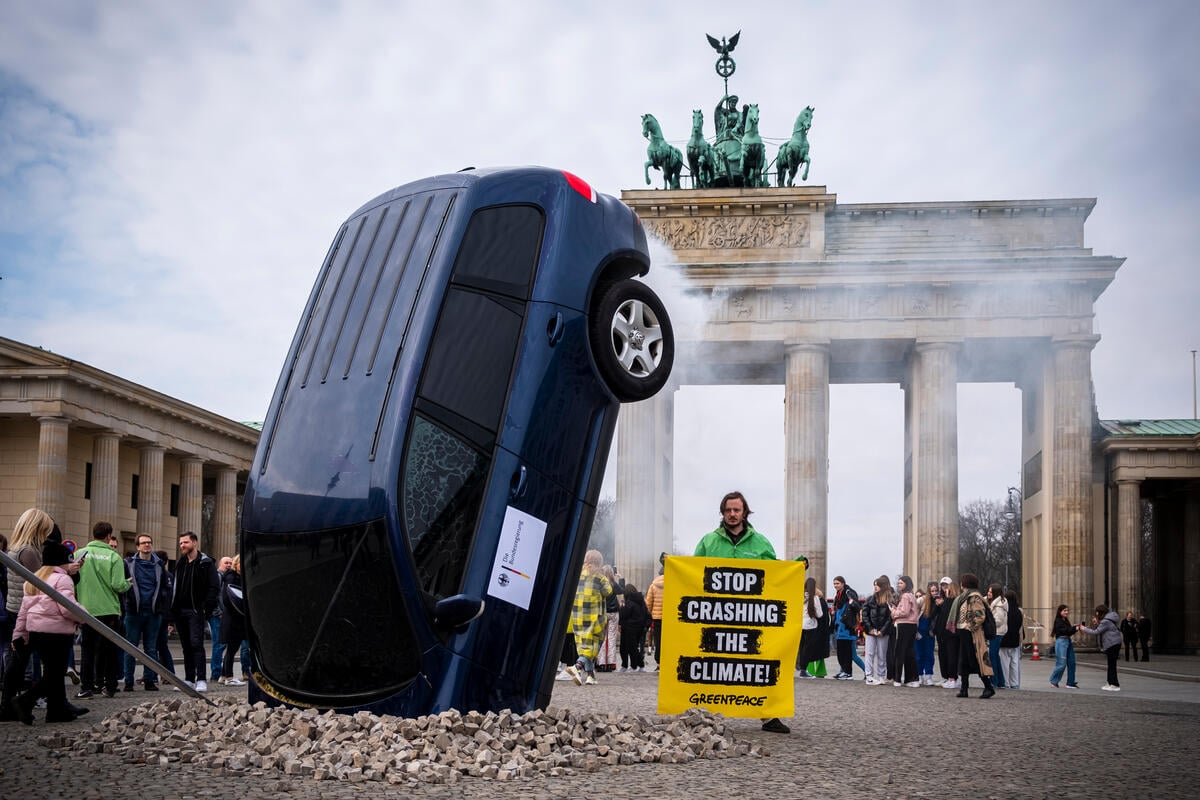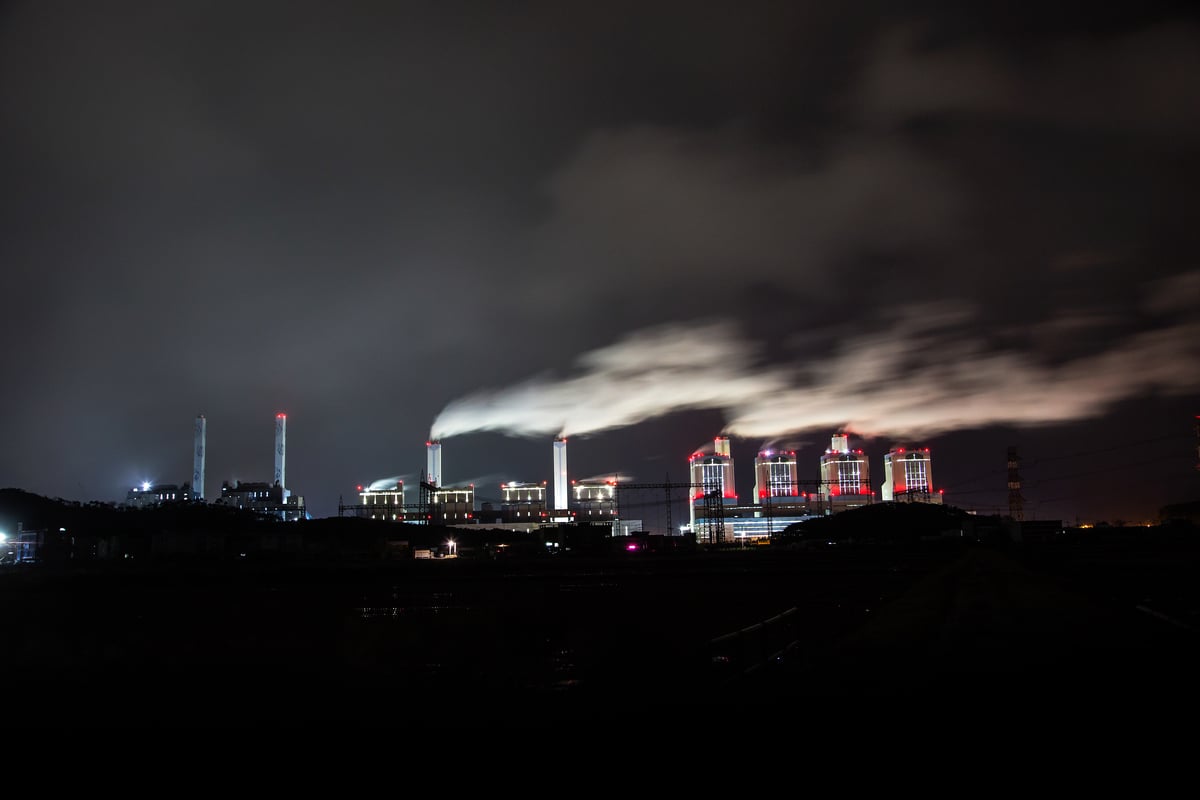TOKYO — Greenpeace East Asia received a response from Toyota Motor Corporation on October 27 to our open letter [1], which questioned the carmaker’s greenhouse gas emissions reduction efforts. This inquiry was sent to Toyota on October 10.
The open letter of inquiry was focused on four key areas:
- Recent trends in Toyota’s total greenhouse gas emissions and their reduction;
- Absolute emissions reduction targets;
- Equitable and sustainable measures to mitigate climate change; and
- Development of alternative fuels and hydrogen in relation to the 1.5°C scenario.
Toyota’s response was received on October 27.
Key Points from Toyota’s Response (translated and summarized from Japanese by Greenpeace East Asia):
- Toyota has identified “coexistence between humanity and communities” as a key priority and is working towards achieving carbon neutrality by 2050. The company supports the Paris Agreement and aims for carbon neutrality not just for use-phase vehicle emissions, but also throughout the entire lifecycle of its vehicles.
- To meet its goals, Toyota is working on establishing battery systems, including the development of next-generation batteries, and engaging in dialogues with fuel companies and governments regarding energy policies and infrastructure development.
- Toyota’s total reduction targets for Scope 1 and 2 emissions, as well as its Scope 3 intensity reduction targets, have been certified by the Science Based Targets initiative (SBTi).
- To meet varying needs across different countries and regions, Toyota is implementing initiatives tailored to local conditions under its “Multi-Pathway Strategy,” which offers diverse mobility options. Details of these initiatives and achievements are available in Toyota’s Sustainability Data Book.
- The company believes that to reduce greenhouse gas emissions, it is essential for companies to maintain the strength necessary for healthy business operations.
Read Toyota’s full response to the open letter HERE (in Japanese) and HERE (in English).
View Greenpeace’s open letter HERE (in Japanese) and HERE (in English).
Greenpeace East Asia’s comment on this response is as follows:
Mariko Shiohata, Climate and Energy Campaigner at Greenpeace Japan, said:
“In our October letter, we posed four specific questions: whether there is a need to reduce total emissions across all of Toyota’s value chain; the necessity of setting a absolute emissions reduction target; whether Toyota recognizes that the development of new technologies should not negatively impact the environment or human rights; and whether its establishment of technologies such as biofuels and hydrogen is consistent with the emissions reduction pace required by the Paris Agreement. Unfortunately, Toyota did not provide clear answers to those questions, and instead reiterated points already included in its sustainability reports and other publications.
“As Toyota itself discloses, it emits approximately 600 million tons of greenhouse gases worldwide each year, an amount equivalent to more than half of Japan’s annual emissions and exceeding the emissions of other major countries such as the UK and France. While hybrids emit less carbon than conventional internal combustion engines per vehicle, it’s clear that total emissions will rise as sales grow.
“Regarding Scope 3 Category 11, Toyota stated that it has received certification for its intensity target from the SBTi. However, the current SBTi standards for the automotive sector are under revision due to inconsistencies with the Paris Agreement’s 1.5°C reduction pathway. Moreover, setting an intensity target alone is inadequate. Greenpeace seeks a clear commitment from the company about its intention to reduce total greenhouse gas emissions. Additionally, emissions reductions from supply chains, such as steel production—which generates a significant amount of greenhouse gases—are not currently included in SBTi certification.
“The world is currently at a critical juncture in whether we can protect our climate and pass this planet on to future generations. We often hear the phrase ‘the economy and business operations cannot be sacrificed’, but unless we take action now to safeguard the future of our planet, it is precisely the economy and business operations that will become unsustainable. We must prioritise and deploy the most effective and rapid technologies and methods to visibly reduce emissions.
Toyota is a company possessing the “robust strength to sustain sound business operations”. While most companies face concerns over declining sales due to Trump tariffs, Toyota has recently raised its vehicle sales forecast for the fiscal year ending March 2026 to a record high. Precisely for this reason, many believe Toyota is in a position to take the lead in reducing emissions from roads – a particularly significant source of emissions within the transport sector.
“Following Toyota’s response, Greenpeace continues to urge the company to immediately set ambitious greenhouse gas emission reduction targets that align with global standards, and to implement realistic and effective measures to genuinely reduce its total emissions.”
END
Notes:
[1] Greenpeace East Asia Press Release “Open Letter to Toyota Motor Corporation Regarding the Company’s Climate Change Measures,“ published October 14, 2025
Media Contacts:
Yujie Xue, International Communications Officer, Greenpeace East Asia (Hong Kong), +852 5127 3416, [email protected]
Natalia Emi Hirai, Communications Officer, Greenpeace Japan, +8180 6558 4446, [email protected]



